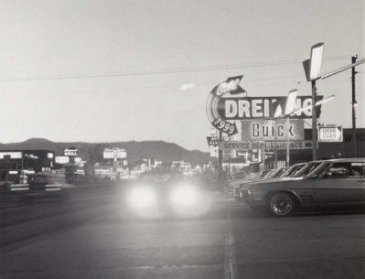The question of new leadership for civic groups when material conditions change

Suburban issues are different from urban issues. Colfax Avenue, Lakewood, CO, Robert Adams.
The kinds of issues discussed in yesterday's Post article, "Pr. George's Group Seeks New NAACP Chapter," about creating a new NAACP chapter in Prince George's County are relevant to civic engagement more generally. (Although interestingly enough, I did wonder whether or not the "new" people are as focused as they should be, is Jena truly a top issue for PG residents, and was the NAACP chapter out of touch for not chartering a bus to go there?)
Change is difficult.
Some of the things that influence the environment in DC that "legacy" organizations are having a hard time acknowledging are:
1. The city isn't shrinking, it's growing, so this changes how people should be thinking about their neighborhoods;
2. People tend to focus on their neighborhoods to the exclusion of broader, more "city-wide," considerations;
3. Demographic differences (age, household type, etc.) and changes;
4. A focus on urban sensibilities -- design -- based on walking and transit rather than suburban sensibilities with an automobile-centric focus and connectivity and mobility paradigm;
5. Parking -- on-street car storage -- vs. transportation and mobility more broadly;
6. Class of course...;
7. Changing power relationships (also see the "iron law of oligarchy" via Michels;
8. And the perennial questions of what to focus on, what is the most important.
In regard to the last, last week Harry Jaffe had a column in the Examiner stating that development, not education, is the key issue in the city, in "Redevelopment trumps school reform as top issue ." Well of course. The local industry is construction and real estate, which supports the federal government and resultant commercial utilization of space. (I still think it's ironic that Jaffe is one of the authors of Dream City. It's as if he never read or truly understands his own book!)
And to understand that, read Dream City and "The City as a Growth Machine."

3rd and Pennsylvania Ave. SE.
Labels: civic engagement, progressive urban political agenda



0 Comments:
Post a Comment
<< Home